Time For This Years First Old Ranch Dinner-Dance (Page Two)


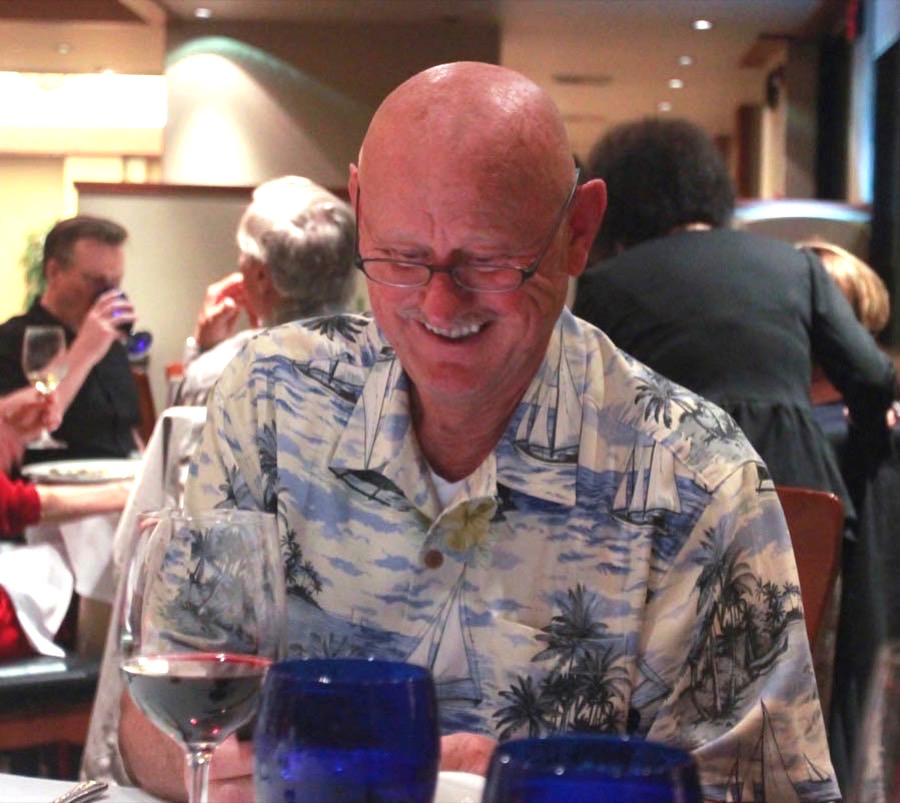
What just popped into his head?
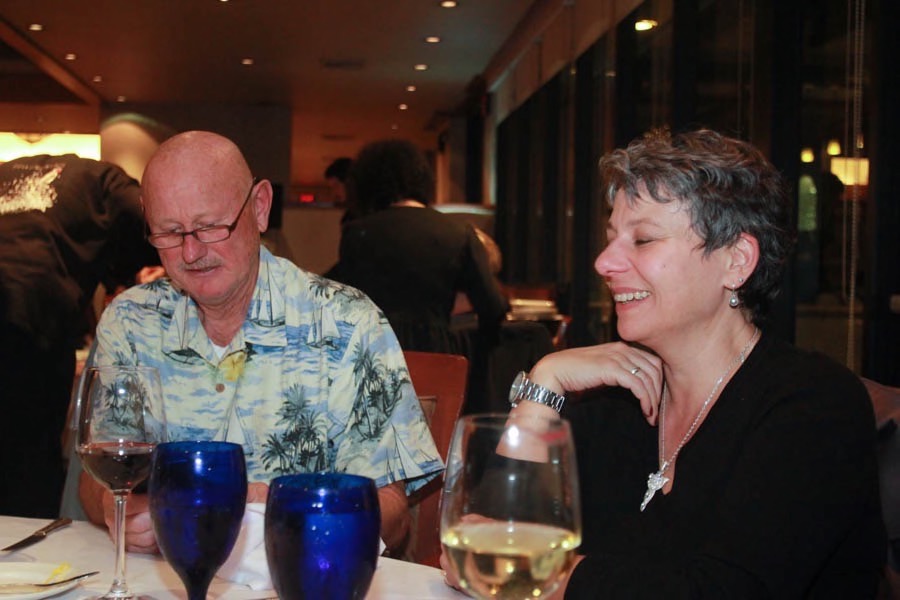
We are about to find out!

Oh Dear.... Can it be?

OMG... I think he found the picture!

They gots the giggles!

What can it be?


Brian is loving it!

"OK guys,,, Share with me!"

"Oops! Too funny!"

"Yes... That is funny!"
Back To The Dance
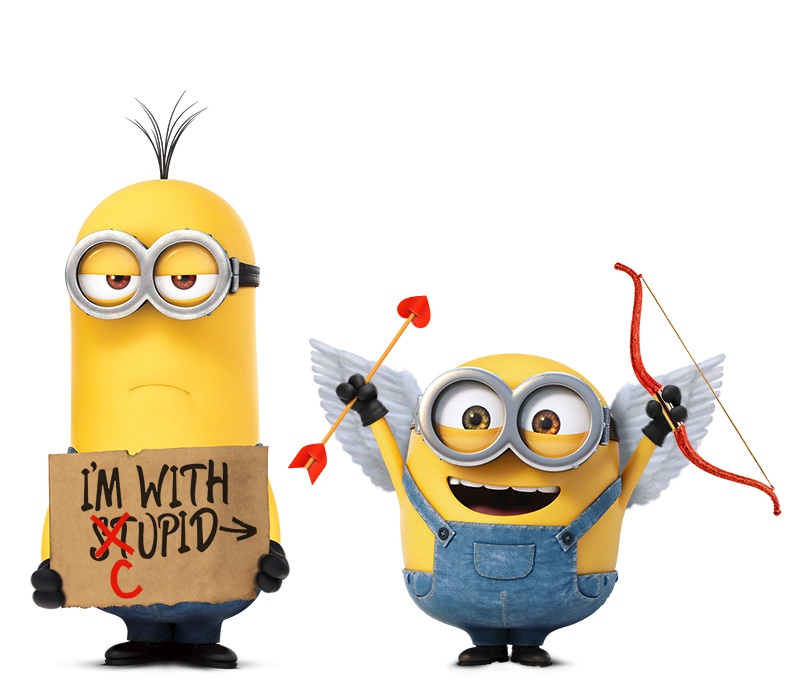

"Make mine a Merlot!"
Did You Know? - Merlot is a dark blue-colored wine grape variety, that is used as both a blending grape and for varietal wines. The name Merlot is thought to be a diminutive of merle, the French name for the blackbird, probably a reference to the color of the grape. Its softness and "fleshiness", combined with its earlier ripening, makes Merlot a popular grape for blending with the sterner, later-ripening Cabernet Sauvignon, which tends to be higher in tannin.
Along with Cabernet Sauvignon, Cabernet Franc, Malbec and Petit Verdot, Merlot is one of the primary grapes used in Bordeaux wine, and it is the most widely planted grape in the Bordeaux wine regions. Merlot is also one of the most popular red wine varietals in many markets.
This flexibility has helped to make it one of the world's most planted grape varieties. As of 2004, Merlot was estimated to be the third most grown variety at 260,000 hectares (640,000 acres) globally, with an increasing trend.
This puts Merlot just behind Cabernet Sauvignon's 262,000 hectares (650,000 acres).
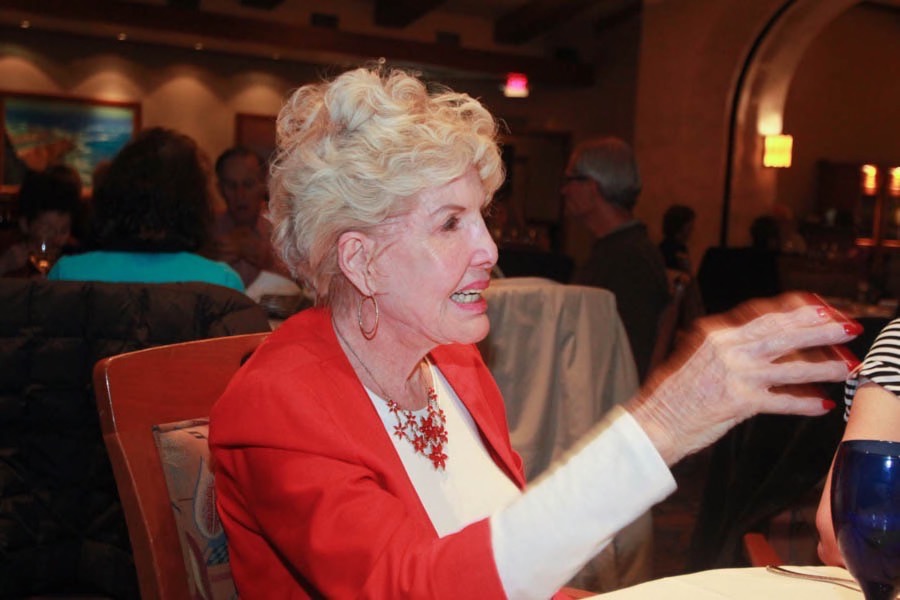
Follow her fingertips... If you can!

"Speak to me o' great electronic device!"

Oh oh.... It's a message to Garcia

"Who the heck is Garcia?"
Did You Know? - A Message to Garcia was originally published as a filler without a title in the March 1899 issue of the magazine Philistine which Elbert Hubbard edited, but was quickly reprinted as a pamphlet and a book. It was very popular, selling more than 40 million copies, and being translated into 37 languages. It also became a well-known allusion of American popular and business culture until the middle of the 20th century. According to language expert Charles Earle Funk, "to take a message to Garcia" was for years a popular American slang expression for taking initiative and is still used by some members of the military.
With tension increasing between the United States and Spain (which then ruled Cuba), President William McKinley desired to initiate communication with the Cuban rebels, who could prove a valuable ally in case of war with Spain. McKinley asked Colonel Arthur L. Wagner to suggest an officer to seek Calixto García, one of the commanders of the rebels. Wagner suggested Andrew Rowan, a lieutenant, who then traveled to Cuba via Jamaica. Rowan met García in the Oriente Mountains and established a rapport. Rowan garnered information from García, who was eager to cooperate with the Americans with regard to fighting the Spanish. Rowan returned to the US and was given command of a force of "Immunes"—African-American troops assumed to be immune to the tropical diseases found in Cuba. He received the Distinguished Service Cross.

Out comes the Squeeze Box!
Did You Know? - The term squeezebox (also squeeze box, squeeze-box) is a colloquial expression referring to any musical instrument of the general class of hand-held bellows-driven free reed aerophones such as the accordion and the concertina. The term is so applied because such instruments are generally in the shape of a rectangular prism or box, and the bellows is operated by squeezing in and drawing out.
Accordions (including piano accordions and button accordions) typically have right-hand buttons or keys that play single notes (melody) and left hand buttons that play chords and bass notes.
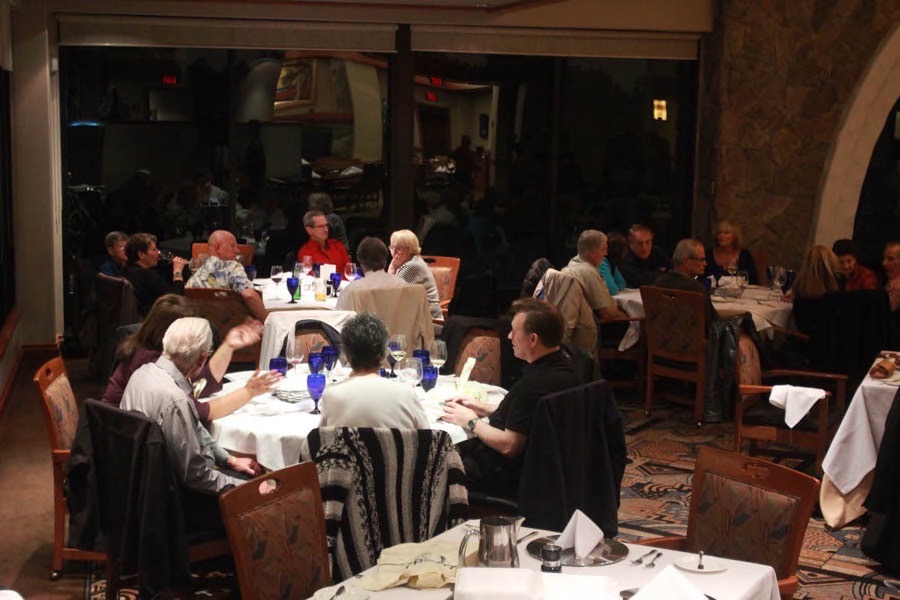
A birds-eye view of our three tables of eight and table of four!

The dancing continued all evening!
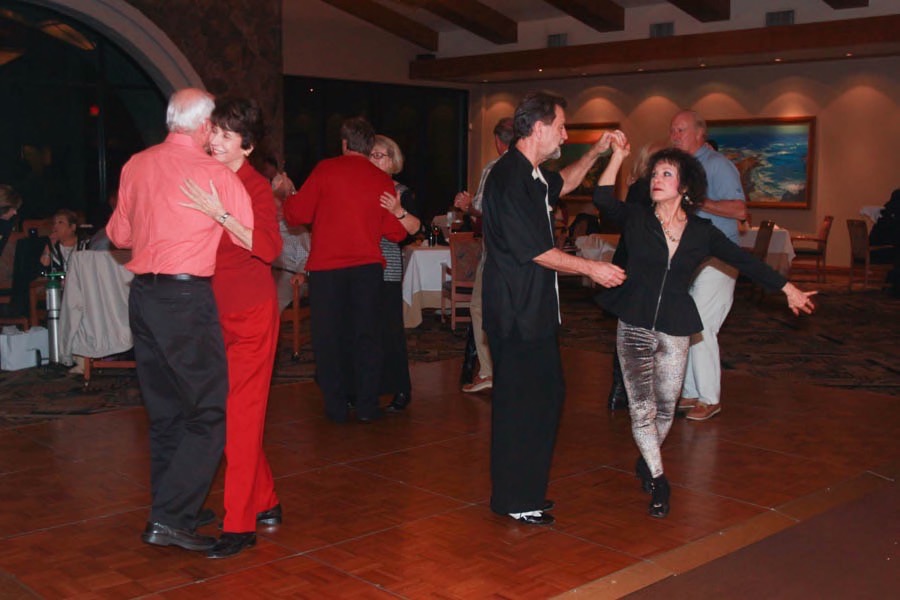
Looking good!


Vicky! Watch your hands!





Craig enjoying the evening!

The entertainment comes to the table!

"What is he up to?"
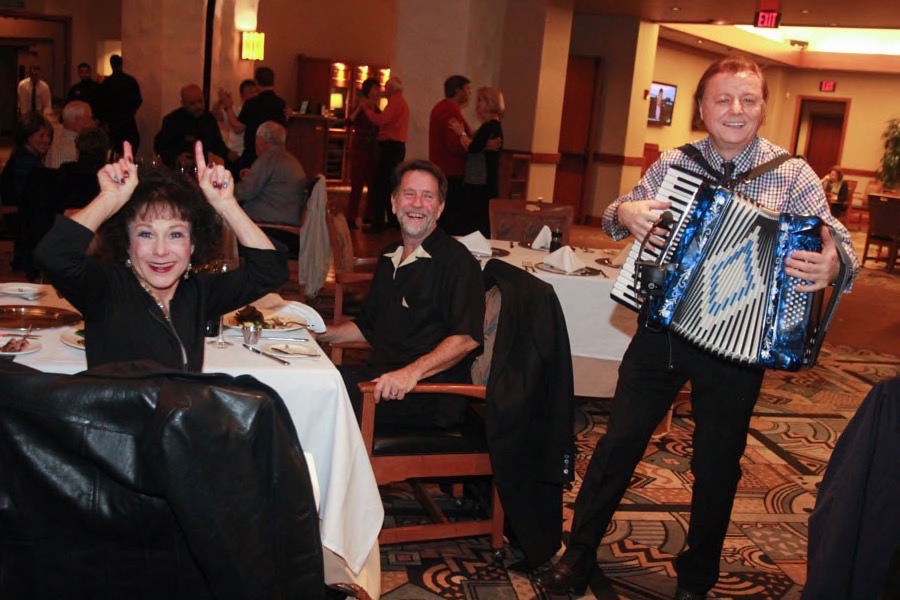
The secret signal... It's cake time!
Time To Celebrate Iris's Birthday!


What kind of a flower is on the cake?
Did You Know? - In Greek mythology, Iris is the personification of the rainbow and messenger of the gods. She is also known as one of the goddesses of the sea and the sky. Iris links the gods to humanity. She travels with the speed of wind from one end of the world to the other, and into the depths of the sea and the underworld. In Greek mythology, Iris is the personification of the rainbow and messenger of the gods. She is also known as one of the goddesses of the sea and the sky. Iris links the gods to humanity. She travels with the speed of wind from one end of the world to the other, and into the depths of the sea and the underworld.

Morpheus and Iris 1811

Thank you Will.... It's a beauty!

"Arturo The Brave" lights the candles

We all moved closer to the cake to warm up!

She plans the attack.... Iris can do four candles!

Encouragement from Steve.... and a song!
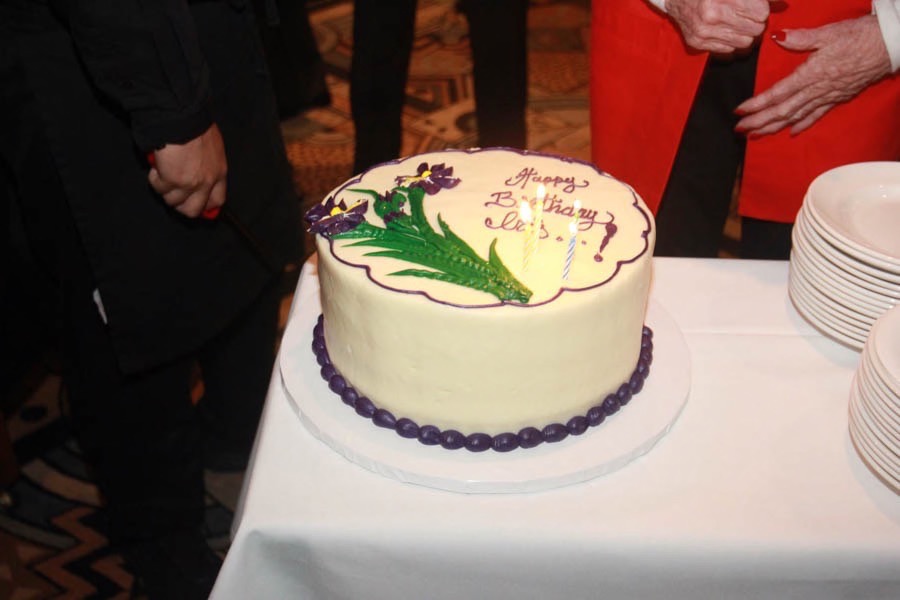
One last look just in case it gets blown across the room!

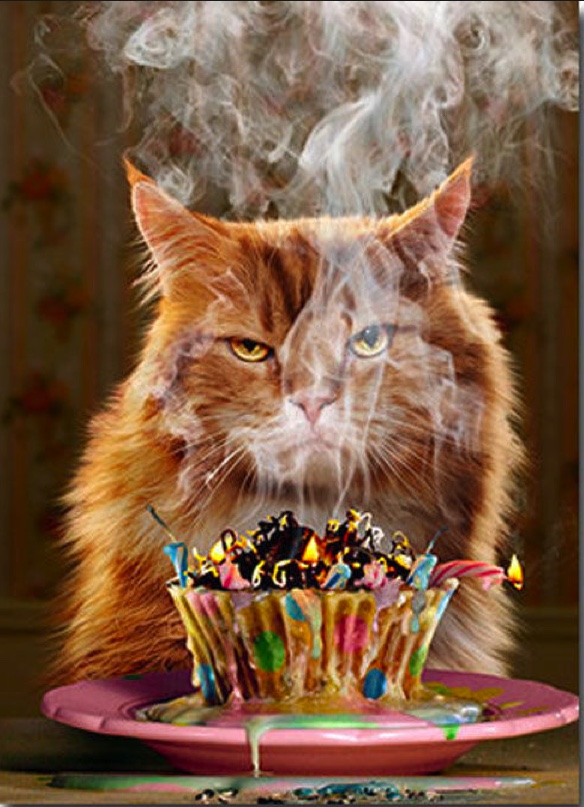
We assisted by removing some of the original candles

They call the wind Maria!
Did You Know? - "They Call the Wind Maria" is an American popular song with lyrics written by Alan J. Lerner and music by Frederick Loewe for their 1951 Broadway musical, Paint Your Wagon, which is set in the California Gold Rush. Rufus Smith originally sang the song on Broadway, and Joseph Leader was the original singer in London's West End.
It quickly became a "runaway hit", and during the Korean War, the song was among the "popular music listened to by the troops".
Vaughan Monroe and his Orchestra recorded the song in 1951, and it was among the "popular hit singles at the record stores" that year.

The deed is done!


Oh Dear.... One of the candles flew off and is stuck to the wall!

Marianne spots the missing candle ... Should she say anything?

We came prepared just in case!

We all sing the "Happy Birthday Song"
Did You Know? - "Happy Birthday to You", also known more simply as "Happy Birthday", is a song that is traditionally sung to celebrate the anniversary of a person's birth. According to the 1998 Guinness World Records, "Happy Birthday to You" is the most recognized song in the English language, followed by "For He's a Jolly Good Fellow". The song's base lyrics have been translated into at least 18 languages.

Looking great!


Juan moves in quickly to cut the cake

Hugs all the way around!

The first piece goes to Iris


Working up a storm!

Arturo to this aid!

This is the Birthday Cake Dance!

The dancing gets underway again!

We always ask others to join us!

Steve's friends said "Oh no... We don't dance"
They were great dancers!

Donna gets to moving and no one can stop her!

The serious music begins now!

Friends are such fun! Always a giggle!

"So Sandy.... Show us how the cake tastes!"

"G double-O Good!"

Vicky is after Kathy's cake when she is not looking!

Will turned down the original design for the carrot cake!

It is disappearing!
Did You Know? - Carrots have been used in sweet cakes since the medieval period, during which time sweeteners were scarce and expensive, while carrots, which contain more sugar than any other vegetable besides the sugar beet, were much easier to come by and were used to make sweet desserts. The origins of carrot cake are disputed. Recipes for carrot cake occur as early as 1827.
The oldest known recipe of carrot cake dates from 1892, in a book of the housekeeping school of Kaiseraugst (Canton of Aargau, Switzerland).
According to the Culinary Heritage of Switzerland, it is one of the most popular cakes in Switzerland, especially for the birthdays of children.

Juan only got one complaint!

